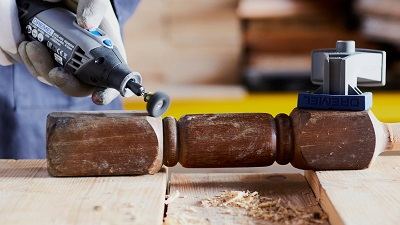Sanding small areas requires precision and control to ensure a smooth and even finish. Using the right tool and technique is essential for achieving the best results while avoiding damage to the surface. Whether you’re working on furniture, trim, or delicate craft projects, here’s a guide to using sanding tools effectively on small areas.
Choosing the Right Sanding Tool
For sanding small areas, handheld tools are ideal. Here are a few options to consider:
- Detail Sander – A small, lightweight tool with a pointed sanding pad designed for tight corners and intricate details.
- Orbital Sander – Suitable for larger small areas, it provides smooth, even sanding with less effort.
- Sandpaper and Block – For maximum control in very tight spots, using sandpaper manually with a sanding block can be effective.
Preparation
Before starting, it’s important to prepare the workspace and your tool:
- Clean the Surface – Remove any dirt, dust, or grease from the area to ensure the sandpaper adheres properly and doesn’t get clogged.
- Choose the Correct Grit – For finer areas, use a higher grit (220 or higher) for a smooth finish. For rough sanding, start with a coarser grit (80-120).
- Wear Protective Gear – Safety goggles and a dust mask are essential to protect your eyes and lungs from debris and dust.
Sanding Method for Small Areas
- Start with Light Pressure – Whether using an orbital sander or a detail sander, begin by applying minimal pressure. Let the tool do the work to avoid gouging the material.
- Move in Controlled Strokes – For smooth and even sanding, move the tool or sandpaper in the direction of the grain. Small, overlapping strokes help to avoid uneven spots.
- Use the Right Motion – With a detail sander or orbital tool, avoid staying in one spot for too long, as this can create uneven surfaces. Move the tool in a back-and-forth motion for uniform sanding.
- Work in Sections – Divide the small area into manageable sections. Sand one area at a time, blending into the next, ensuring even coverage.
Common Precautions
- Don’t Over-Sand – It’s easy to get carried away with sanding, especially in smaller areas. Over-sanding can damage the surface or reduce the quality of your project. Check frequently to ensure you’re not removing too much material.
- Be Careful Around Edges – When sanding near edges, be extra cautious not to round them off unintentionally. Use light strokes and avoid too much pressure on the edges.
- Maintain the Sandpaper – If you’re using sandpaper manually or with a tool, ensure it’s clean and free of debris. Clogged sandpaper will lose its effectiveness and may scratch the surface.
- Keep the Tool Moving – Never let the sander sit in one place for too long. This can create deep marks or burns on the surface.
Post-Sanding Care
After sanding, wipe down the area with a clean cloth to remove any dust. This ensures a smooth surface for finishing, whether you’re applying paint, stain, or varnish.
Conclusion
Using the right tool and technique for sanding small areas can make a significant difference in the quality of your work. Detail sanders, orbital sanders, or even manual sanding are all effective when used with proper precautions. By applying light pressure, working in sections, and choosing the correct grit, you can achieve a smooth and polished finish, perfect for small projects and intricate surfaces. Always remember to wear protective gear and keep the sanding tool moving to avoid damage.
Related Topics:

